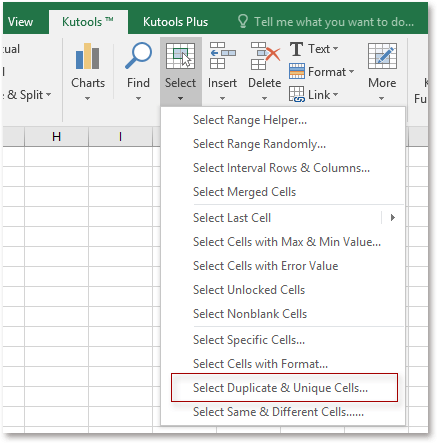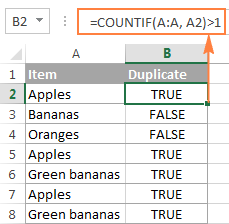

However, if your values contain times, it might, depending on how the time values were entered.
EXCEL FIND DUPLICATES IN ONE COLUMN SERIAL
Excel uses each date’s serial value, but that won’t interfere with the technique. Let’s enhance the sheet above to see how this works:
 Use CountIf() to count the number of combined values. Concatenate the columns you’re checking. You might try an advanced filter or even conditional formatting, but both would require so much hoop-jumping that I’m not sure the end result would be worth the fuss, when compared to the easy-to-implement solution that follows: It’s not a good solution, especially if you have lots of data. Even then, you have to trust your user to actually spot them. That means a user has to review at least five sets of records to find duplicates. In this case, there are five distinct dates. It’s fairly easy to spot the duplicates, rows 8 and 9, in such a simple sheet, but what if you had hundreds or thousands of rows to check?Īn AutoFilter will work, but it’s a vulnerable solution. That’s what I mean by a multi-column duplicate. However, we’re interested in records that repeat the same date and the same initials. A few dates are repeated and a few initial sets are repeated they represent duplicates within those columns. The sheet below contains a column of dates and a column of initials. Let’s take a quick look at a simple example. You probably want a solution that kind of screams out at you Here I am! I’m a duplicate!
Use CountIf() to count the number of combined values. Concatenate the columns you’re checking. You might try an advanced filter or even conditional formatting, but both would require so much hoop-jumping that I’m not sure the end result would be worth the fuss, when compared to the easy-to-implement solution that follows: It’s not a good solution, especially if you have lots of data. Even then, you have to trust your user to actually spot them. That means a user has to review at least five sets of records to find duplicates. In this case, there are five distinct dates. It’s fairly easy to spot the duplicates, rows 8 and 9, in such a simple sheet, but what if you had hundreds or thousands of rows to check?Īn AutoFilter will work, but it’s a vulnerable solution. That’s what I mean by a multi-column duplicate. However, we’re interested in records that repeat the same date and the same initials. A few dates are repeated and a few initial sets are repeated they represent duplicates within those columns. The sheet below contains a column of dates and a column of initials. Let’s take a quick look at a simple example. You probably want a solution that kind of screams out at you Here I am! I’m a duplicate! 
So while it’s better than no solution at all, it’s not a good solution. A sort can work, but then you have to find the duplicate values. Finding duplicates that span multiple columns is a tad more difficult. Duplicates that span multiple columns require a bit of setup, but the solution's not difficult to implement.įinding duplicate values in the same column is easy you can sort or apply a filter depending on the circumstances. Use formulas to find multi-column duplicates in Excelĭuplicates in the same column are easy to find by sorting or filtering.







 0 kommentar(er)
0 kommentar(er)
